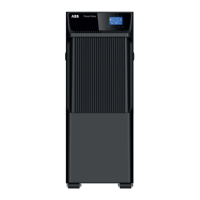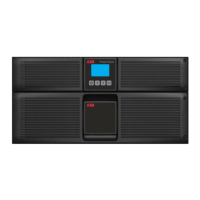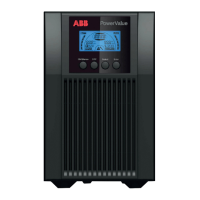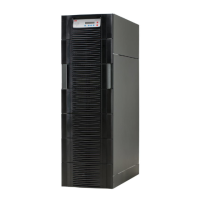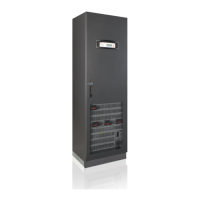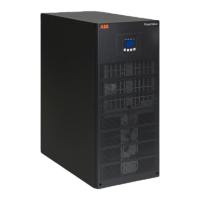
Do you have a question about the ABB PowerValue 31/11 T 10 kVA and is the answer not in the manual?
| Power Rating | 10 kVA / 9 kW |
|---|---|
| Active Power | 9 kW |
| Frequency | 50/60 Hz |
| Topology | Double Conversion Online |
| Efficiency (AC-AC) | up to 94% |
| Operating Temperature | 0 to 40 °C |
| Protection Class | IP20 |
| Battery Type | VRLA |
| Battery Runtime | Dependent on configuration |
| Communication | RS232, USB, optional SNMP |
| Humidity | 0 to 95% (non-condensing) |
User must follow precautions and perform only described operations for UPS safety.
Installation site must meet environmental parameters for UPS efficiency and longevity.
Product conformity to EEC directives and harmonized standards.
Contact local office or agent for UPS inquiries, noting type code and serial number.
Guidelines for safe operation, including enclosure removal and earth connection.
Proper disposal of batteries, emphasizing safety and environmental regulations.
Identifies components visible on the front of the UPS unit.
Identifies components visible on the rear of the UPS unit.
Identifies components on the front of the external battery cabinet.
Identifies components on the rear of the external battery cabinet.
Procedures for receiving, unpacking, storing, and planning the UPS installation.
Covers all aspects of connecting the UPS to electrical power, including wiring and procedures.
Information on UPS battery types, internal and external configurations, and maintenance.
Details on backfeed protection and emergency power off functionality for safe installation.
A comprehensive checklist to ensure all installation steps are completed.
Overview of the UPS control panel, including LEDs, display, and selection keys.
Symbols and descriptions of the different operating modes of the UPS.
Procedures for starting up and shutting down the UPS system.
Navigating the UPS display, changing modes, and accessing menu functions.
Details on the RS-232 port for UPS monitoring, control, and firmware updates.
Information on connecting the UPS via USB for computer communication.
Optional cards for remote UPS management via internet/intranet.
Guides for identifying and resolving UPS faults and alarms through systematic troubleshooting.
Steps to resolve issues when no specific error message is displayed.
Solutions for problems identified by specific error messages and alarm codes.

